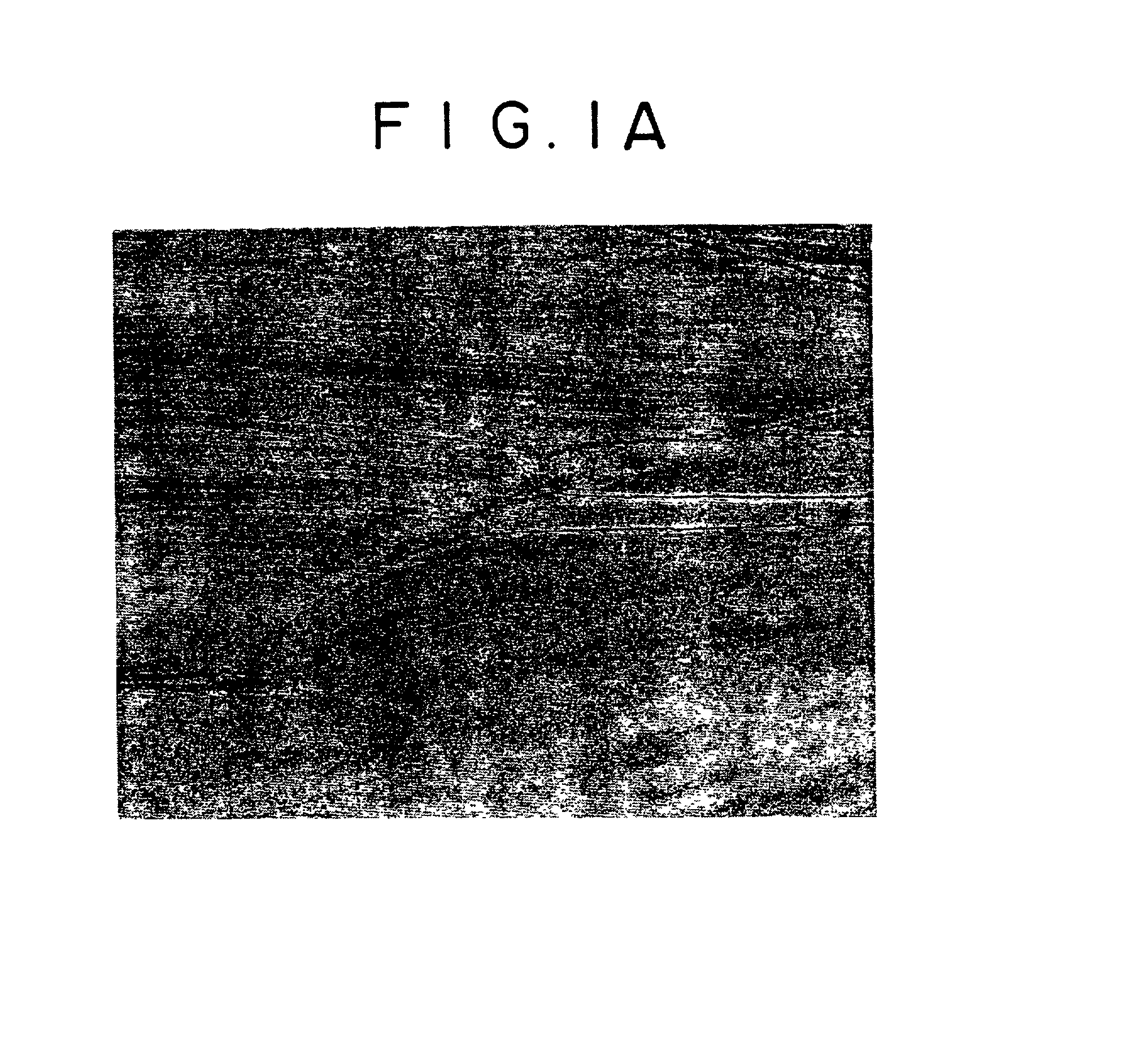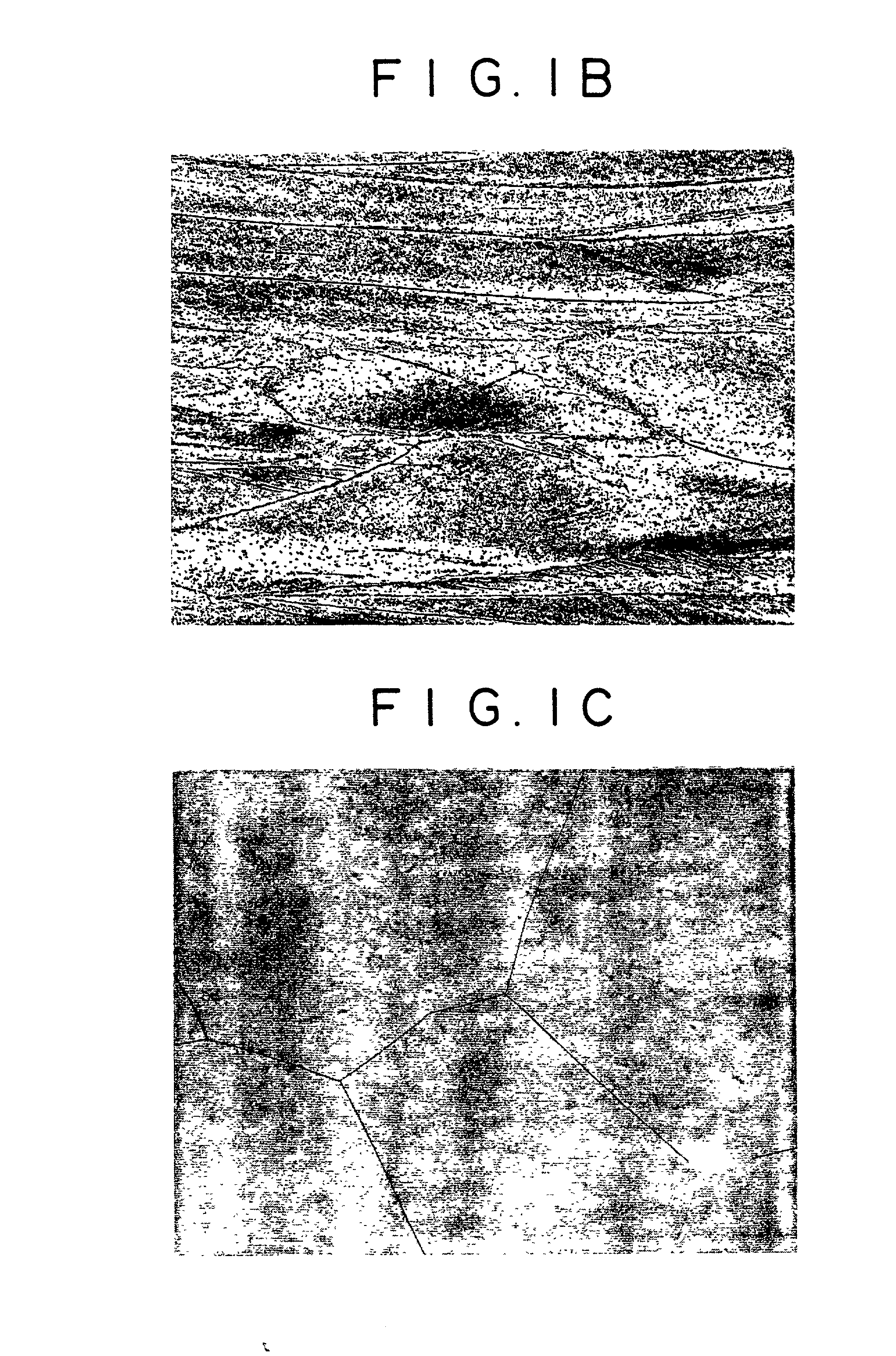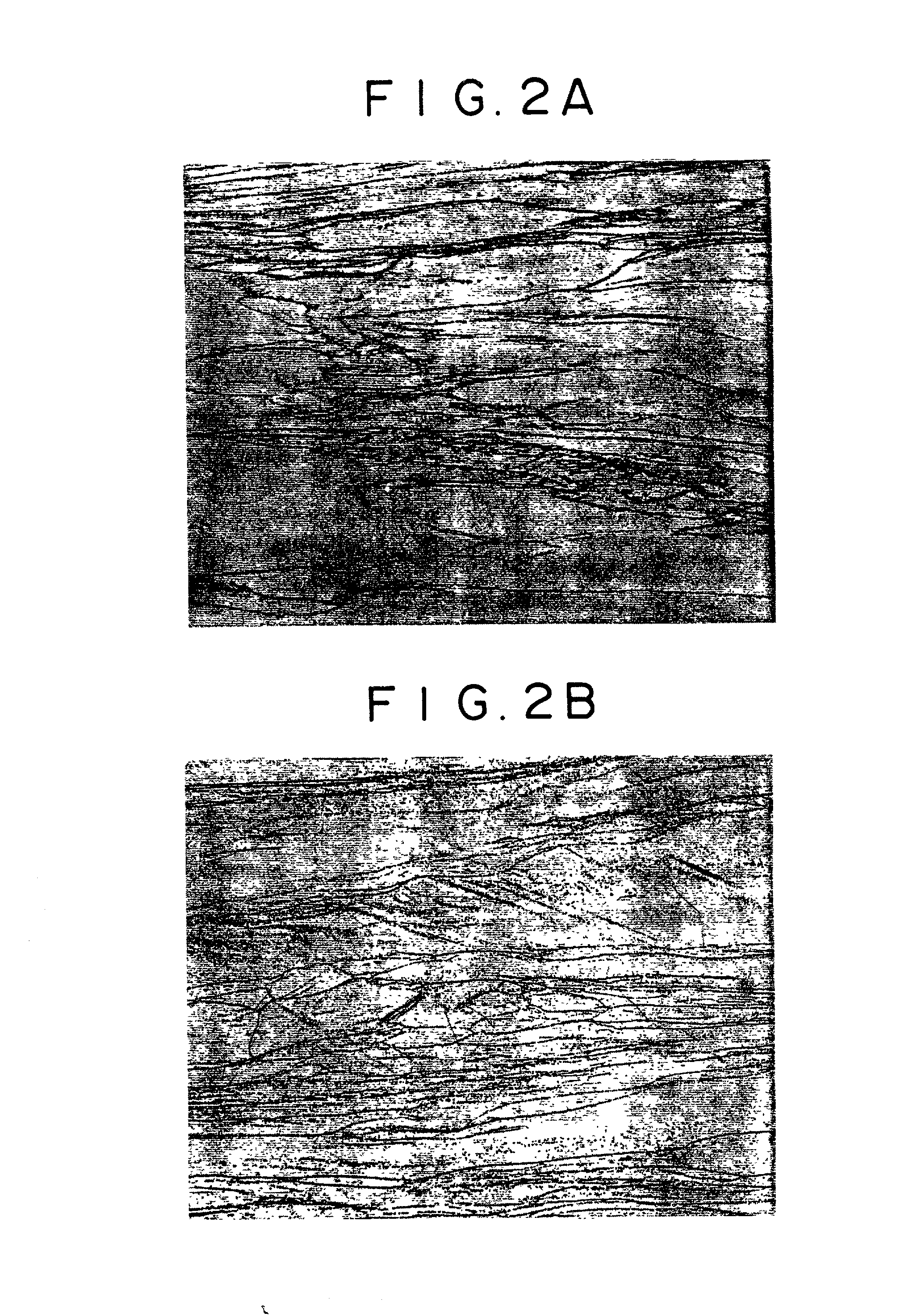Titanium alloy and production thereof
a technology of titanium alloy and alloy, applied in the field of titanium alloy, can solve the problems of increased age hardening, low yield, and reheating not being allowed after, and achieve the effects of high ductility, high toughness, and high strength
- Summary
- Abstract
- Description
- Claims
- Application Information
AI Technical Summary
Benefits of technology
Problems solved by technology
Method used
Image
Examples
example 2
[0126] A series of near-.beta. titanium alloys Ti--5Al--2Sn--2Zr--4Mo--4Cr (Ti-17) with Si in a varying amount from 0 to 1.2% were prepared. They were cast into ingots. Each ingot weighing about 10 kg was forged at 1200.degree. C. to make a billet measuring 60 mm wide, 45 mm thick, and 800 mm long. The temperature at the end of forging was about 800.degree. C. The thus obtained billet was cut in lengths of about 200 mm.
[0127] The cut billet was heated to 1200.degree. C. and then hot-rolled so as to reduce the thickness from 45 mm to 22 mm. This hot rolling was carried out in various ways such that it finishes at 850.degree. C. to 1000.degree. C. Some billets were cut during hot rolling and heated again to 950.degree. C. and rolled again to reduce the thickness from 22 mm to 18 mm, followed by air cooling.
[0128] The thus rolled materials underwent solution treatment (at 800.degree. C. for 4 hours, followed by water quenching) and aging (at 620.degree. C. for 8 hours, followed by air ...
example 3
[0134] The alloys in Example 2 meet the requirements prescribed in claim 4. Therefore, they have a macrostructure of about 0.5 mm which is much smaller than that of ingot (coarse .beta. grains of about 20 mm). This was confirmed by microscopic observation.
[0135] For investigation into the factor which makes the macrostructure fine, the following experiment was carried out. A 45-mm thick stock for rolling was cut directly out of an ingot. It was heated to 1200.degree. C. and rolled (50%) such that rolling finished at varied temperatures from 1100 to 850.degree. C. at intervals of 50.degree. C. The rolled product was heated at varied temperatures from 1100 to 850.degree. C. at intervals of 50.degree. C. for 2 hours. The thus obtained sample was examined for macrostructure.
[0136] It was found that those samples whose working finished at a temperature above 1000.degree. C. did not have their macrostructure refined (although flattened) as the result of reheating at any temperature for 2 ...
example 4
[0137] To see the effect on structure produced by incorporating Si into titanium alloys (which is the fundamentals of the present invention), two kinds of titanium alloys were prepared, one having a conventional composition of Ti--5Al--2Sn--2Zr--4Mo--4Cr and the other having an improved composition of Ti--5Al--2Sn--2Zr--4Mo--4Cr--0.5Si. Incidentally, the second titanium alloy contains silicides which precipitate at about 950.degree. C. and dissolve at about 1000.degree. C.
[0138] Each of the titanium alloys was made into an ingot (weighing 120 g and measuring about 20 mm wide) by button melting. The ingot was heated to 1200.degree. C. and hot-rolled to a thickness of 5 mm without reheating. Working finished at 700.degree. C. This hot working is the typical .beta. process.
[0139] The resulting rolled stock underwent the standard heat treatment (solution treatment and aging treatment) at 800.degree. C. for 4 hours (followed by water quenching) plus at 620.degree. C. for 8 hours (followe...
PUM
| Property | Measurement | Unit |
|---|---|---|
| Fraction | aaaaa | aaaaa |
| Fraction | aaaaa | aaaaa |
| Fraction | aaaaa | aaaaa |
Abstract
Description
Claims
Application Information
 Login to View More
Login to View More - R&D
- Intellectual Property
- Life Sciences
- Materials
- Tech Scout
- Unparalleled Data Quality
- Higher Quality Content
- 60% Fewer Hallucinations
Browse by: Latest US Patents, China's latest patents, Technical Efficacy Thesaurus, Application Domain, Technology Topic, Popular Technical Reports.
© 2025 PatSnap. All rights reserved.Legal|Privacy policy|Modern Slavery Act Transparency Statement|Sitemap|About US| Contact US: help@patsnap.com



